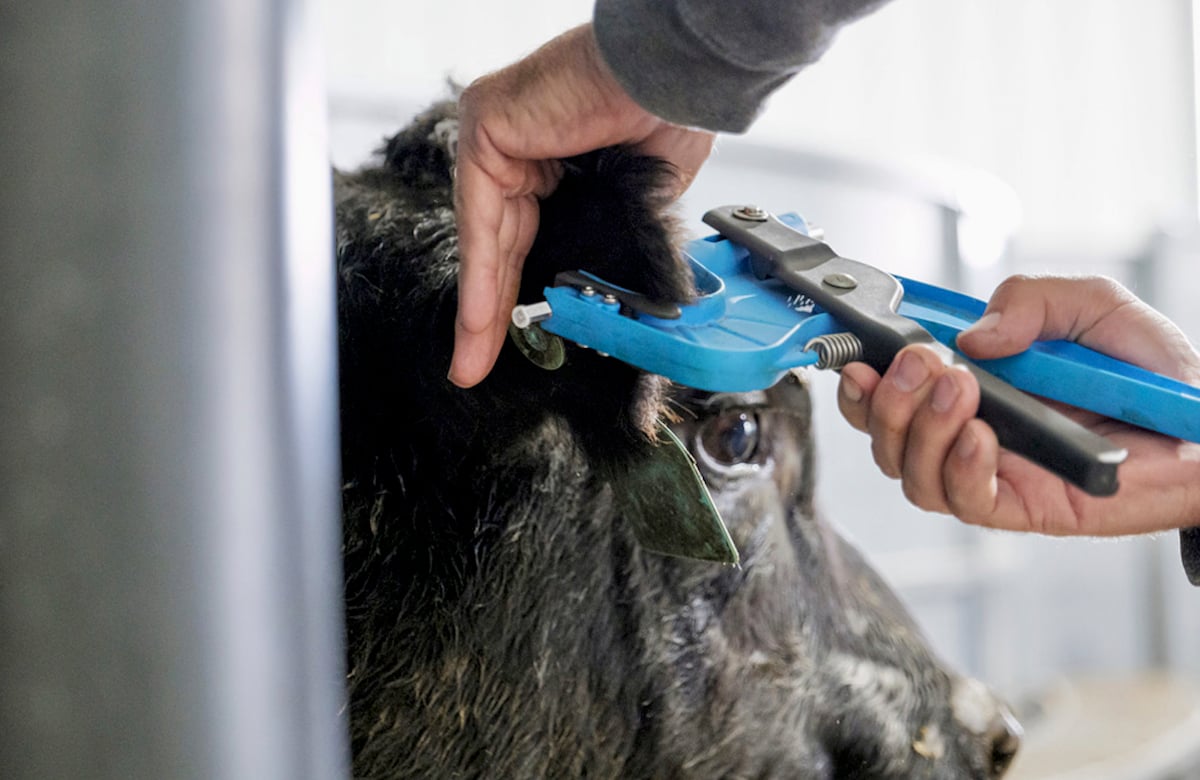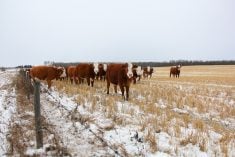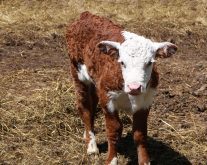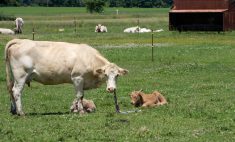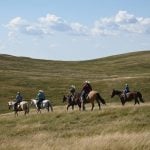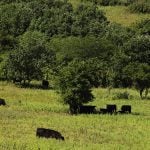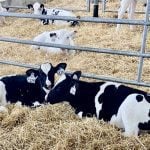For seed stock producers, taking DNA samples from newborn calves is becoming more common.
Most seed stock herds calve in the winter when the temperature can dip to around -30 C or beyond, snow sparkling under a harsh winter sun. At that time of year, there is already so much to do, and adding another task — taking DNA samples of all those newborn calves — could add stress. However, those samples could be a benefit, and may become the new norm in the industry.
According to Sydney Tuckwiller and Paige Pratt, the benefits of taking DNA samples are almost countless.
Read Also
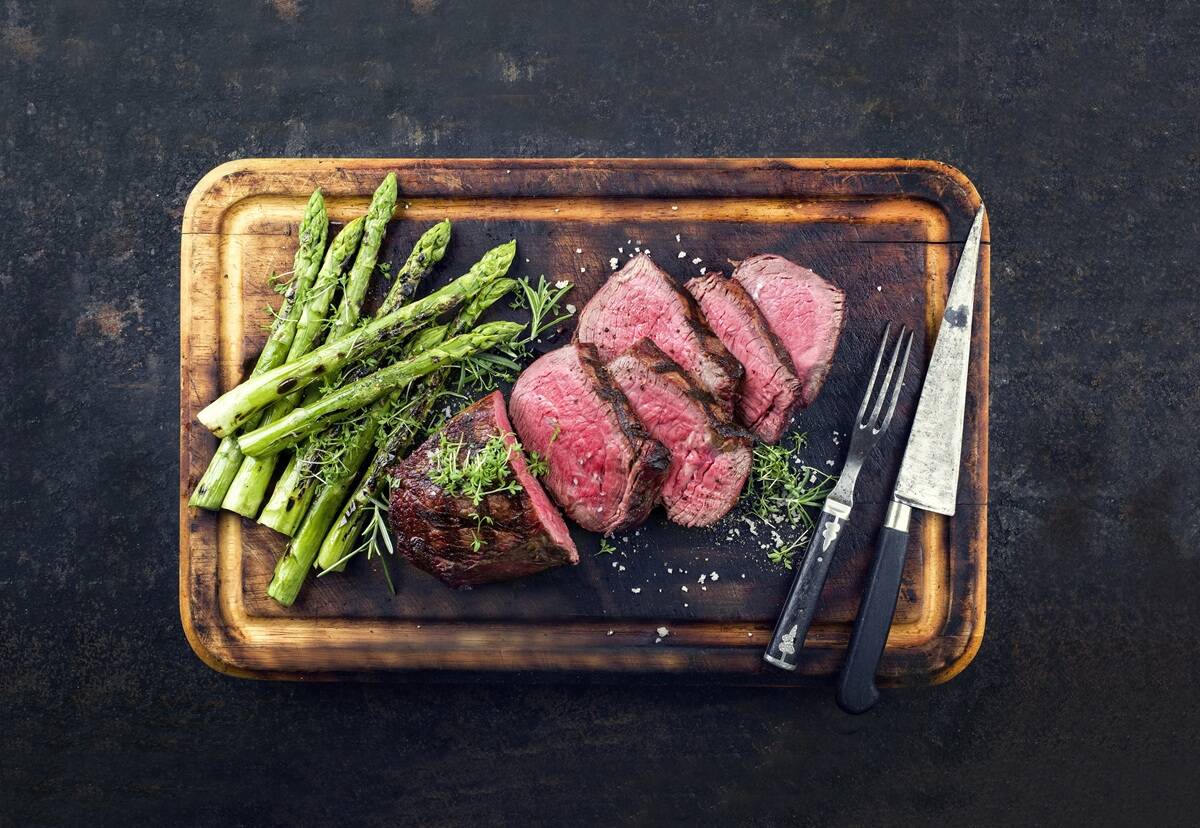
Building demand together: The impact of Canada’s beef import levy
The beef import levy has become a central tool for ensuring balance in Canada’s beef industry
“It’s amazing what we can do with this technology, and especially the information that we can gather from an earlier age,” Tuckwiller says.
Both Tuckwiller and Pratt are genomics experts at Neogen Corporation, a Michigan-based food safety and animal health company.. While Neogen serves both companion and performance animals, on the beef side of things they focus on genomics for cow-calf, feedlot and seed stock.
- RELATED: Which bull sired that calf?
Both Tuckwiller and Pratt emphasize the importance of DNA testing calves. They say it can improve many things on your operation, such as decision-making and your bottom line.
“If we have a better idea of what that calf is at an earlier age, then we can start making decisions sooner and then not having to spend so much money on the input on those individuals, because at the end of the day, that’s what ends up costing us money,” Tuckwiller says.
“And we don’t want to have to hold on to something that is only going to cost us money in the long run and doesn’t meet our breeding objectives.”

Pratt says improved accuracy is one of the biggest benefits of DNA testing, ensuring you are investing in the cattle that will give you the best bang for your buck.
As a producer herself, Pratt says DNA testing allows her to be more confident in her cattle and to know the quality of the animals she is selling.
“We can make (EPDs) more accurate so the producers who are buying those genetics have more confidence.”
Sean McGrath is a rancher and consultant in Vermilion, Alta. He says implementing DNA testing has been one of the most beneficial things he has done on his operation. While it’s an investment, it’s one that will pay off in the long run.
“Especially from a seed stock perspective, the quicker you can figure out with a high degree of certainty the pedigree on that animal, it sets you up to have a good start.”
Getting samples
There are multiple ways to get a DNA sample, with the most common ones being a hair sample and a tissue sample.
While hair samples may be the easiest to get — just pluck some hair from the tail, neck or poll — it is also the most likely to fail while in testing. This is because there must be enough root of the hair to test. It also can be more expensive than the tissue sample, because it requires the lab technicians to separate the entire hair follicle, which is more labour-intensive.
Overall, tissue sampling units (TSUs) are the recommended way to go.
“The TSUs have less fail rate, they speed up the process and… they are easier to take than any other method,” Pratt says.
To take the sample, all you have to do is punch out a small piece of the calf’s ear. Many tissue sampling unit applicators are equipped with ear tags so when you take a sample, you apply an ear tag at the same time.

McGrath says you should make sure each DNA sample is well labelled to be sure it belongs to the right calf, and sent for testing promptly.
“That sample doesn’t do any good sitting on the desk or sitting in a filing cabinet. So you need to have a system where you’re actually actively sending those things in and getting test results.”
The cost of a DNA sample depends on where you get it and what you want the lab to test. For example, the AllFlex tissue sampling unit can cost around US$30 for a box of 10. NeoGen’s costs around US$20 for a box of 10. Neither includes the price of the applicator.
You will also have to pay to have the DNA samples processed in a lab. However, there are ways to save money.
“You don’t have to test for everything. You might want to do a high-density test and have the genetic evaluation of it more accurate to set EPDs on a calf,” McGrath says. “You might not have to test homo polled or colour until that bull makes your bull sale.”
He says if you already have the sample collected and sent to the lab, you can ask them to test for other things in the future — you don’t have to pull the sample again.
When to take samples
There is no hard-and-fast deadline for taking a DNA sample, as long as it is early enough in the calf’s life and is at a convenient time for you. During calving, however, is a logical choice, because you can tag the calf as you take the DNA sample.
Some people also take DNA samples at weaning time.
“Originally, we took them at preconditioning for weaning,” Pratt says of her operation. “And then by weaning we would have the results. We felt like maybe we needed to back that up in our operation to give us even more time to be able to kind of put it all together, and so we backed it up and we’re taking samples at birth now.”

Producers should give themselves enough time to take the sample, send it into the lab, and allow processing time before they start making decisions about the future of the calf.
Pratt says when taking DNA samples during calving time, it’s crucial to ensure the ear is dry.
“If mother’s fluids are still on that calf, we’re going to have cross-contamination. So we want to make sure that we have a dry ear. Do not clean it with any disinfectants or cleaners. Just wipe it dry with the towel and then take that sample.”
When using tissue sampling units, it’s important to make sure you don’t leave them sitting in your vehicle, or anywhere else where it could get cold overnight. This can increase the possibility of those tests failing.
The same goes for hot weather.
“It doesn’t have to be refrigerated or frozen. Just bring it in and set it on the table and then take it back out with you the next day,” Pratt says.
Other data
In addition to DNA testing, there is more data seed stock producers should collect at calving time. For example, cows that have had abortions, stillborn calves, C-sections or hard calves to pull, which may mean they will have issues in the future.
Record-keeping at calving time is important to help make informed decisions about your operation. It helps identify areas to improve, as well as successes.
“It’s unfortunate maybe in a way, but DNA doesn’t replace data collection, and some of what happens just the way genes are inherited and the way these SNP markers work, is if we quit collecting data, over time, the markers become less powerful or less informative,” McGrath says.
Pratt says there is also value in keeping a record of phenotypes.
“If we stop collecting phenotypes, in three to four generations, our accuracy of our EPDs will decrease.”
The Beef Cattle Research Council (BCRC) website has a series of three modules that talk about genetic record-keeping and what producers should keep their eyes out for. It covers many topics such as heritability, how to select replacement heifers and replacement bulls, how to use records to make cull decisions and more. The goal of these modules is to help producers decide what is important to them for genetic record-keeping and to help them set production goals.
Genomic record-keeping
When it comes to the importance of genomic record-keeping, Pratt says it’s becoming more and more widespread across the beef industry.
“You don’t have to do it (keep genomic records), but you do have to compete against the guy down the road that is.”
Because of this, seed stock producers should consider implementing genetic testing.
“I think every seed stock producer should do it if they’re serious about producing genetics for the marketplace,” McGrath says.
Compared to other industries, the beef industry is behind in genetic testing and technology implementation. Dairy, poultry and pork have been genetic testing for years, and it’s a staple in those industries. The grain industry, too, is constantly improving its technology.
Pratt believes it’s time for the beef industry to catch up.
“You can get on the cart, or you can be left behind.”
With more people using genetic testing, technology continues to improve as well.
“The same money you would have spent five years ago or 10 years ago, you’re getting way more powerful tests. And that’s not going to stop, that’s continuing. So, I think that’s pretty exciting,” McGrath says.


